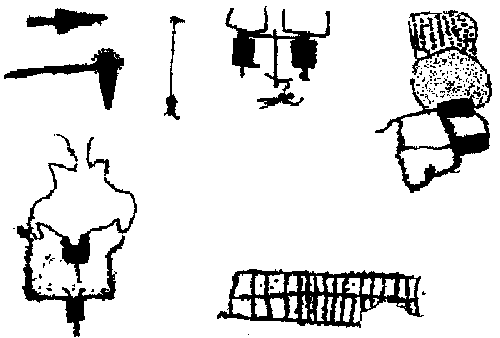TRACCE no. 9 – by Lawrence Barfield, Christopher Chippindale
2nd International Congress of Rupestrian Archaeology
2-5 October 1997 DARFO BOARIO TERME
Meaning in the rock-engravings of Mont Bégo, Alpes-Maritimes, France
What did the celebrated petroglyphs of Mont Bégo mean, in the lives of the people who made them?
The mountain itself offers only the slightest clues. For an archaeological context we need to look down from the mountain, to the deposits where the objects are found that supply its characteristic imagery.
We can start with the dagger. Examination of the dagger in later prehistoric contexts in northern Italy shows this object is decisively associated with masculinity, wheter in graves or depicted on statue-stelae. So – less plainly – is the halberd, another kind of hafted blade alongside the dagger with its hafted blade; human figures in Bégo engravings that hold halberds are gendered male.
These masculine associations of the metal objects are congruent also with a masculine association of the plough, for ploughing has often been men’s business and the Bégo images of ploughmen are also gendered male. Finally, of the understood images of Mont Bégo, the topographies – if they are indeed maps – would also show a masculine association, for these are the delimited areas won from the woodland for the man’s business of ploughing.

Mt. Bego engravings (from Lumley de)
In sum, the Bégo imagery is a collected set consistently associated with the role of men in society. We may wonder if this high and stormy mountains was a special place where young men learnt about those reserved things which were men’s business.
This interpretation, based first in the regularities of the mass of Bégo figures, takes a form different from those other recent interpretations which find in the mountains either a paired god and goddess or the distinctive set of deities of Indo-European knowledge.
TRACCE no. ![]() special issue for RA Congress 1997
special issue for RA Congress 1997
![]()















Leave a Reply